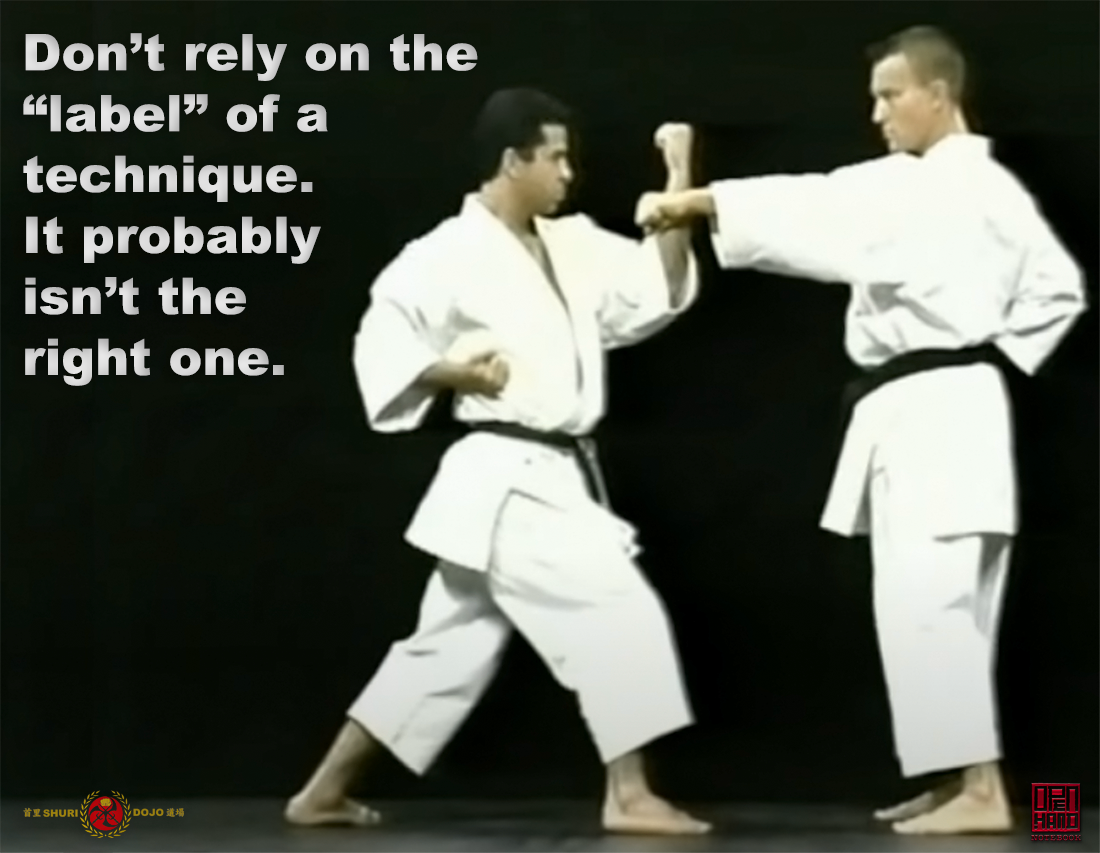
Many practitioners of karate have forgotten that its original purpose was self-defense. To quote Anko Itosu; “…. a way of avoiding injury by using the hands and feet should one by any chance be confronted by a villain or ruffian.”
.
Today the need for martial arts to be purely self-defense has diminished, and the potential benefits in physical health and character development are emphasized. Sporting versions of the art are hugely popular, and while all of this is very valuable, it does tend to obscure the original nature of the art.
.
While the sport, physical health and personal growth aspects of karate are all extremely valuable, we need to be clear that teaching those aspects alone will obscure karate’s true nature. We need to remember that self-defense is at the core of karate.
.
As an example, you can see when it comes to kata applications. There’s widespread misunderstanding that kata is a choreographed and impractical “fight” against several karate practitioners at the same time, all attacking from different positions.
.
Kata specifically was created for close-range civilian altercations. But many practitioners try to apply it at “sparring range”, where it does not work so well. We then have people saying kata does not work.
.
We need to be clear about the original purpose of karate, and how it applies to the true nature of criminal violence.
.
Karate practitioners today measure themselves against themselves. Expertise is measured in the ability to respond “correctly”……. I’m going to block your stepping punch with a “chudan uke”.
.
In actual violence, nobody stands six feet apart with your hands held in a guard waiting for an attacker to respond. Attackers don’t throw punches where you are able to block and counter-attack. There is no “proper” distance in a fight. Violent attackers don’t play along.
.
In actuality, expertise should be measured by the ability to deescalate and avoid violence. And when violence is unavoidable, it should be dealt with swiftly and with commitment.
.
The problem when thinking of ‘techniques’ alone, is the expectation that they will always work in the way they are described. The translation from Japanese into English is another area where mistakes are made to the intention behind the ‘technique’.
.
So if techniques alone can fail what can we do?….. Look at the whole movement instead.
.
Movement has a shape, and we hang a name on to that shape (jodan uke, gyaku tsuki, gedan barai etc). But then we get hung up on the name. We fail to see what that shape could also be. It’s very common for practitioners to look at a real life application, but not see the technique because it’s not identical to their view of the stylized technique.
.
They are movement patterns. Don’t pigeon hole movements into a single technique. (ie this is chudan uke it blocks a middle punch).
.
I often hear people quote; “a punch is a strike is a block”, but this is too simplified. Why? Because they are ignoring the principle behind the movement. In effect they are looking at the end of the technique, when they should be looking at the beginning of it, to truly understand what is going on.
.
If the beginning of the movement is ignored or not understood, then you will miss the part that evades, parry’s the attack, controls the limb, destroys the limb, attacks the head/throat/groin, takes them off their feet etc. etc.
.
These are the sequences that become a set of principles for responding to a situation by using the movement in its entirety, from beginning to end.
.
Don’t rely on the “label” of a technique. It probably isn’t the right one.👊🥋
.
.
